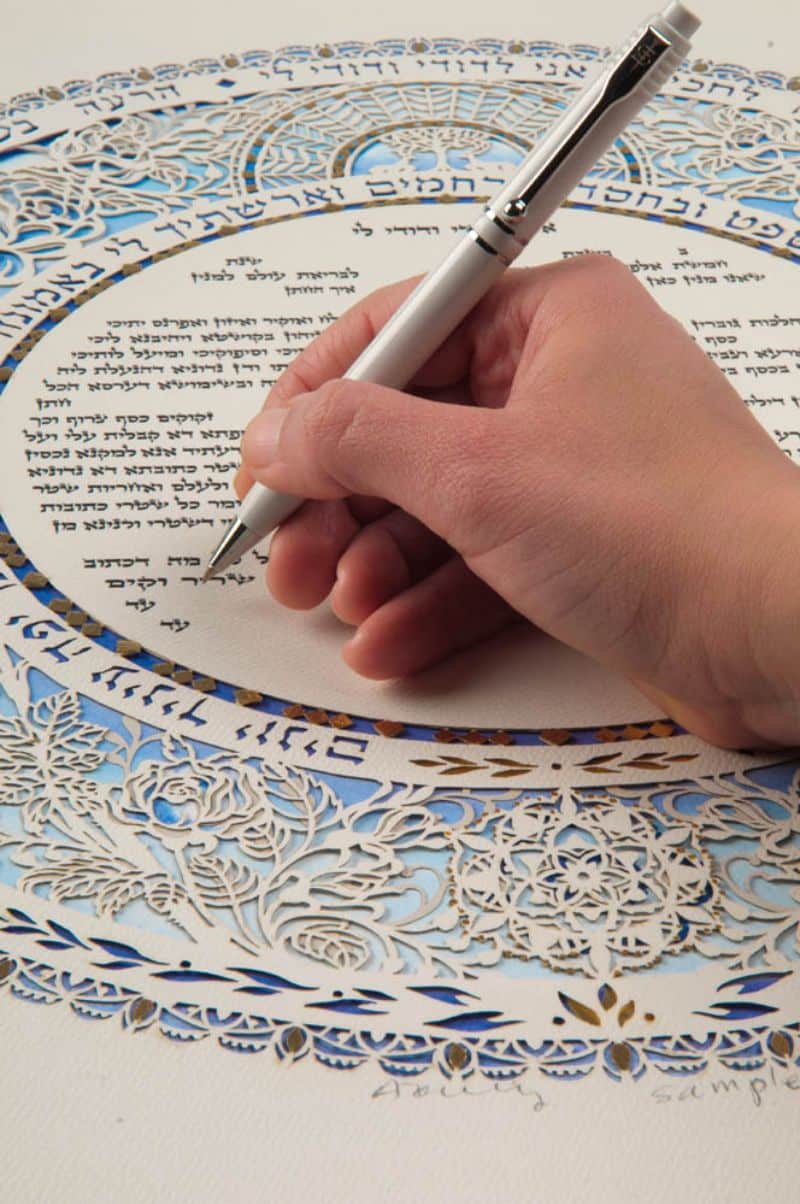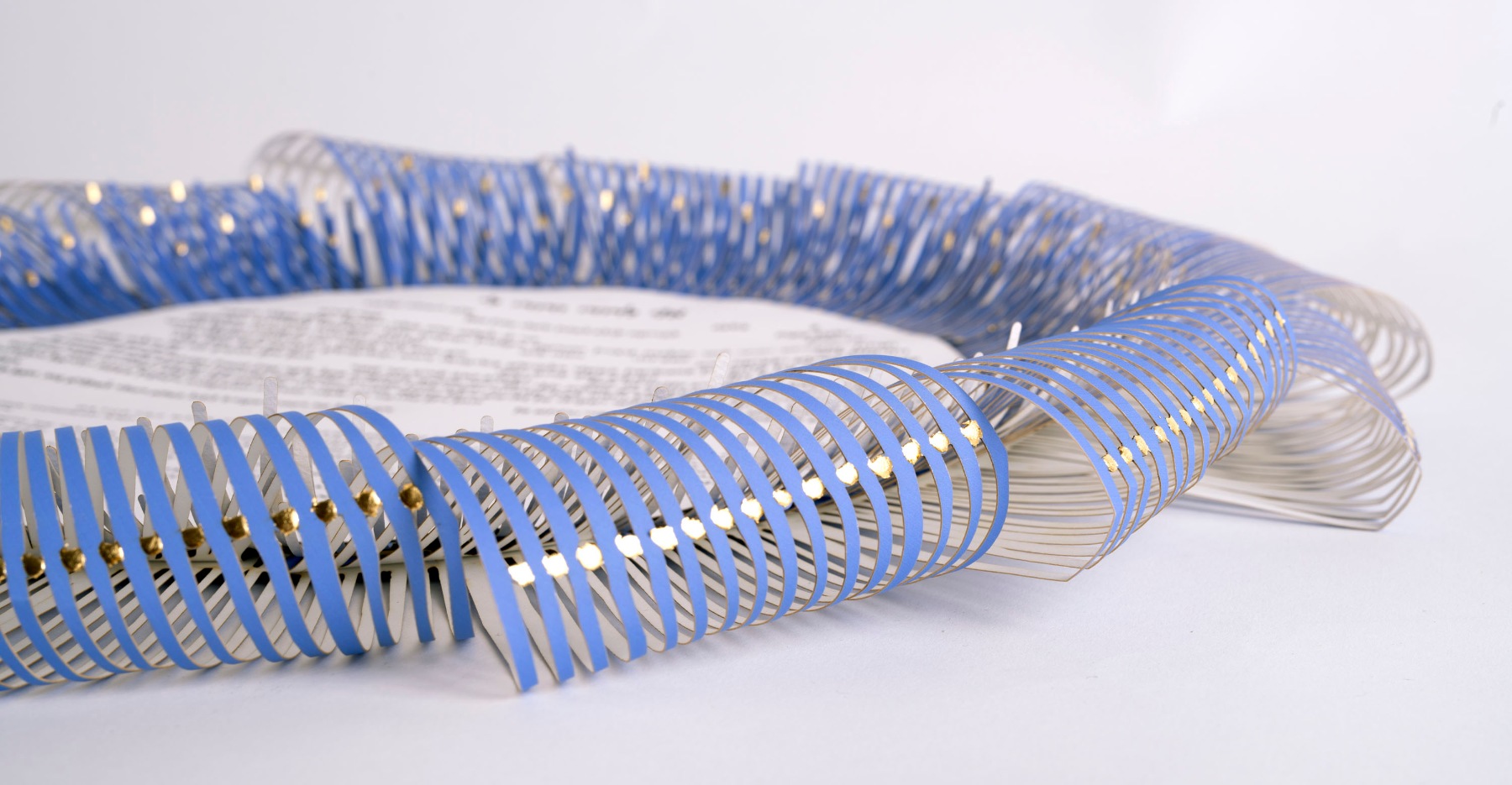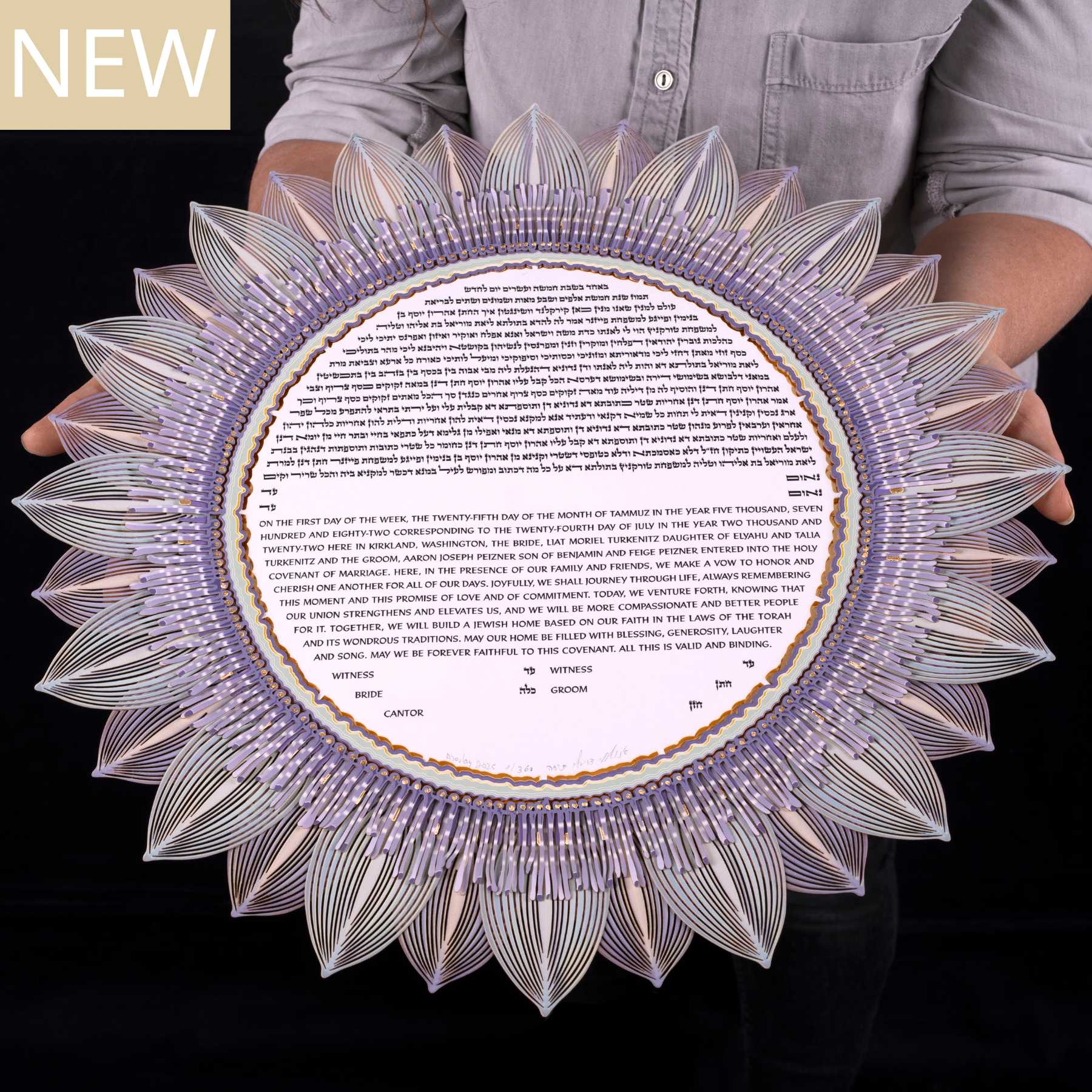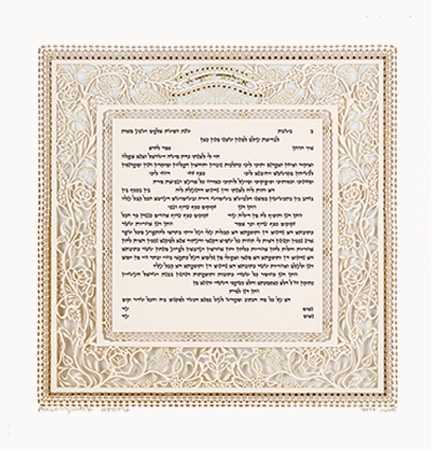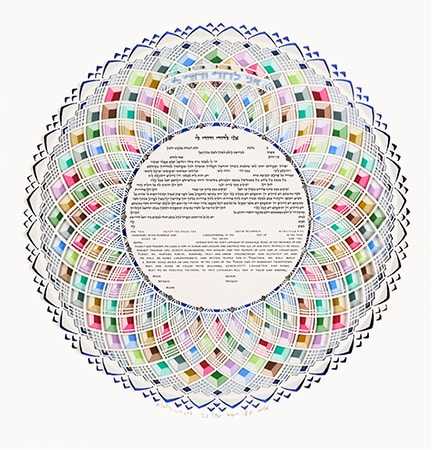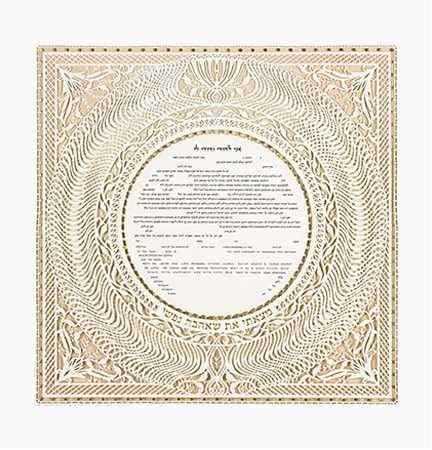What Language Is the Ketubah Written In? Understanding Aramaic vs. English Text
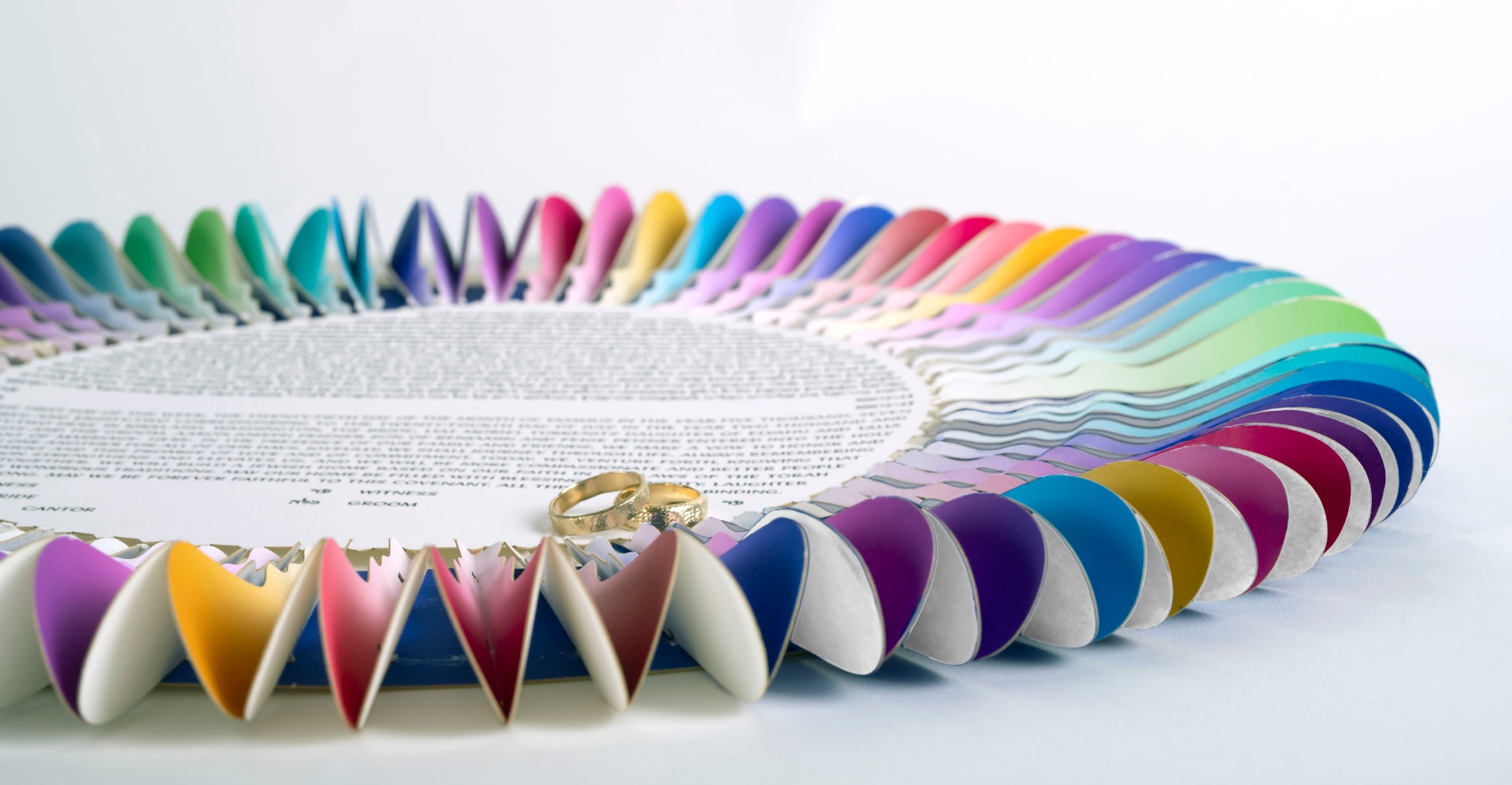
A ketubah is far more than a ceremonial token or decorative piece—it’s a meaningful Jewish marriage contract that reflects both legal tradition and spiritual commitment. While modern couples may see it as a beautiful keepsake from their wedding day, historically the ketubah has played a pivotal role in Jewish marital law. The language of the ketubah matters deeply because it determines the structure, meaning, and purpose of this unique legal document.
Traditional ketubahs were written in the Aramaic language, which, for centuries, served as the spoken tongue of Jewish communities and as the legal standard in rabbinical courts. The Aramaic Ketubah wasn’t poetic—it was precise. It listed the groom’s obligations toward the bride, including financial support, emotional commitment, and conditions in case of divorce. In this context, Aramaic was not chosen for its beauty but for its legal durability—it functioned much like Latin in early European legal texts. In fact, Sephardic texts and Ashkenazi versions of hand-written ketubahs both adhered to versions of this structure, often preserved through oral tradition and rabbinic commentary.
Over time, many English-speaking Jewish communities began adopting English texts or incorporating translations to make the ketubah more accessible. This shift became especially prominent in Reform and Conservative movements. Conservative ketubah texts, for example, still uphold many halachic standards, yet they often include clauses for gender equality or mutual responsibilities, offering a modern interpretation while maintaining ties to tradition. Many include the Lieberman clause which requires the groom to grant a get, a Jewish divorce, to prevent the bride becoming an agunah, an untenable situation for a Jewish wife.
Today, couples can choose from a wide range of ketubot—from ancient formats to fully customized texts. Whether opting for a historically grounded Aramaic version or a bilingual modern adaptation, understanding the role of language in a ketubah helps frame it not only as a piece of art, but as a living bond between two people grounded in law, culture, and covenant, that has been agreed upon by both partners.
Aramaic vs. English – What’s the Difference in Meaning and Use?
The ketubah has long been an essential component of the Jewish wedding, but how it’s written—and in which language—can significantly affect both its meaning and comprehensiveness. Traditionally, ketubot were composed in Aramaic, an ancient language once widely spoken in Jewish communities. While this lends the document historical depth and halachic legitimacy, it also presents a challenge: most modern readers cannot understand it without a literal translation or guidance from a rabbi.
That’s where English comes in. Many couples today, especially in interfaith marriages or among younger generations of the Jewish people, opt for ketubot that include English versions alongside Aramaic or Hebrew. These direct translations are meant to provide clarity and inclusivity, especially when one partner is not fluent in Hebrew or Aramaic. However, translating sacred texts is never a perfect science. The language of love, responsibility, and commitment may shift subtly—or significantly—depending on the tone, word choice, and interpretation.
In comparing standard ketubah texts written in Aramaic to their English counterparts, one finds that the legalistic phrasing in Aramaic focuses more on the groom’s obligations, while English versions often expand on emotional themes like partnership, mutual respect, and shared dreams. These changes reflect not only linguistic nuance but also denominational influence—Reform ketubot, for instance, often incorporate more egalitarian principles, whereas Sephardic communities may favor preserving ancient formulas.
Even the language fonts chosen for the text—flowing calligraphy or modern minimalist type—can influence how the document is perceived. For couples who value their Jewish heritage but wish to make the ketubah meaningful to both partners, choosing a bilingual format offers the best of both worlds: reverence for tradition, combined with emotional resonance and modern relevance.
Bilingual and Hebrew Ketubot – Meeting in the Middle
As modern couples strive to personalize their wedding experience while still honoring sacred tradition, bilingual ketubot have become increasingly popular. Blending clarity with heritage, these documents offer both English and Hebrew (or Aramaic) versions of the text, allowing couples and guests alike to engage with the meaning behind the words. Whether it’s a Hebrew ketubah that maintains traditional flow or a fully customized bilingual piece, today’s couples often seek both readability and emotional resonance.
A standard version of a ketubah written solely in Aramaic might read more like a legal contract than a romantic covenant. In contrast, today’s ketubot often pair the aramaic legal-documents ketubah language with a modern English or Hebrew rendering-more like a codicil , than a literal translation- bridging the gap between formality and emotion. Artists and rabbis have responded to this demand with dynamic layouts that accommodate both languages side by side in visually engaging formats.
From a design perspective, this dual-language format is also an opportunity to create a beautiful art ketubah—one that honors halachic structure while expressing the couple’s aesthetic. The ketubah design becomes a canvas where ancient and modern elements coexist, each enhancing the other.
Ultimately, the bilingual ketubah represents more than convenience—it reflects the evolving nature of Jewish life and love, where tradition is not abandoned but lovingly adapted to meet the needs of today.
Choosing the Right Ketubah Language for You
Selecting the language of your ketubah is a meaningful part of the planning process—one that goes beyond aesthetics or formality. It’s a decision that reflects how you wish to engage with Jewish traditions, honor your relationship, and share your story in a way that feels authentic. Some couples gravitate toward traditional Aramaic or Hebrew, drawn to the historic resonance and sacred weight of the text. Others prefer a fully personalized version in English or a bilingual layout that offers both accessibility and spiritual grounding. There’s no one-size-fits-all solution—only the one that speaks to you.
This choice is also a wonderful opportunity to consult with your officiant or rabbi. They can offer insight into the religious or cultural implications of your decision, guide you through common formulations, and ensure that the ketubah aligns with your ceremony’s tone and your values as a couple. Whether you seek a more halachic structure or a poetic expression of mutual vows, your ketubah can hold that vision—faithfully and beautifully.
Danny Azoulay, an accomplished ketubah artist, have mastered the delicate balance of tradition and innovation. His ketubot often incorporate stunning calligraphic alphabet styles alongside refined art design, blending historical depth with a layer of beauty that enhances the text’s meaning. The result is more than a contract—it’s a beautiful design worthy of framing and preserving.
For life partners seeking a meaningful marriage gift to themselves—or to another beloved pair—a ketubah created with care and intention is an enduring keepsake. More than just a document, it becomes a symbol of values, partnership, and the future you’re building together. Choosing the language is the first brushstroke in that timeless picture.


